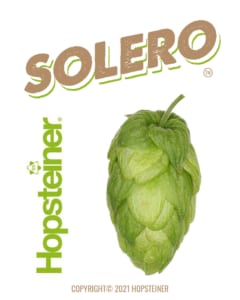You’ve probably heard us talk about these before, but what do they really mean?
1. YOU CAN ONLY SANITIZE CLEAN EQUIPMENT
Referencing the heart of cleaning—know the soil you are cleaning, and choose the proper chemicals. Removing the soil and organic proteins should be the first priority in your cleaning and sanitizing process. This doesn’t mean you should use just any household cleaner or your own DIY recipe that you developed with your neighbor to save a couple extra George Washingtons. You will not have the same results as built and chemically tested products. It also doesn’t mean you should trust what you see. Just because you can’t see the organic proteins on your equipment, doesn’t mean they aren’t there. This is not a good time to have a “good enough” mentality. In the beer industry; the soils we are trying to remove are beer stone and proteins. The two best types of alkaline cleaners to use on beer soils are chlorinated caustics and oxygenated compounds (PBW). These blends work faster an at lower temperatures then other blends.R
2. DIRTY EQUIPMENT WILL ALWAYS CONTAIN BACTERIA.
Without the removal of all soils from equipment there will always be the possibility that the bacteria will be protected from the sanitizer and no one wants that. Many sanitizers will react with any organic material left behind on your equipment before they kill the bacteria. Dirty equipment also means un-rinsed. If you use a cleaner and don’t properly rinse, there is a chance the sanitizer will become neutralized. There is also a change the un-rinsed cleaners will react with the acids and produce corrosive gasses. Since it would seem silly to brew with a gas mask on, we suggest always rinsing your cleaners first.
3. CLEANERS ARE NOT SANITIZERS
Some may think these two steps are basically the same. They are not and should consist of two steps–cleaning and then sanitizing. Cleaners are designed to remove soils and sanitizers kill the bacteria.
3. SANITIZERS ARE NOT CLEANERS
Don’t cut corners. There is not one solution for both. See #3.
4. FOLLOW PRINTED LABELED INSTRUCTIONS FOR TIME, TEMPERATURE, AND CONCENTRATION
All cleaners and sanitizers require time, temperature, and concentration to do their job effectively. The labeled instructions are there for a reason and you should follow them. Most companies, other than maybe Ikea, work really hard on those instructions to make sure you get the most efficient use out of your product and have studied the alternatives
5. DO NOT OVERUSE CLEANERS AND SANITIZERS
Never use the rule “If a little is good, then a lot is better.” Welcome to a thing called chemistry, where “a lot” is usually bad. In the case of sanitizers over use will provide excellent kill but will void the no rinse of the sanitizer, and can leave off flavors, or worse, corrode your equipment. Overuse of the alkaline cleaner will normally require more rinsing, and if you are using caustic cleaners you will neutralize the rinse acid, leaving a white film or neutralize your sanitizer. Remember when we told you to follow the labeled instructions? Yeah, we meant that.
6. CLEANERS AND SANITIZERS CAN ONLY DO THEIR JOB IF THEY COME IN DIRECT CONTACT
Don’t be lazy. Too many times people assume their C.I.P. will do everything or the chemicals will do all of the work. Since we live in an imperfect world this isn’t a very good assumption. You wouldn’t just get into the shower and stand in one place, call it good, and get out assuming the water did all of the work and you’re clean now. There will always be areas such as under manways and racking arms where the cleaning and sanitizing solutions will not have contact initially. These areas should be identified, and hand cleaned, or power washed as a part of normal cleaning and sanitizing.
7. ALWAYS ADD CLEANING OR SANITIZING CHEMICALS TO WATER. NEVER ADD WATER TO THE CHEMICALS
We just want to keep you safe. If you add water to the chemicals there’s a chance of a bad reaction or the chemicals splashing on you.
Source: https://fivestarchemicals.com/blog/the-eight-rules-of-cleaning-and-sanitation/






